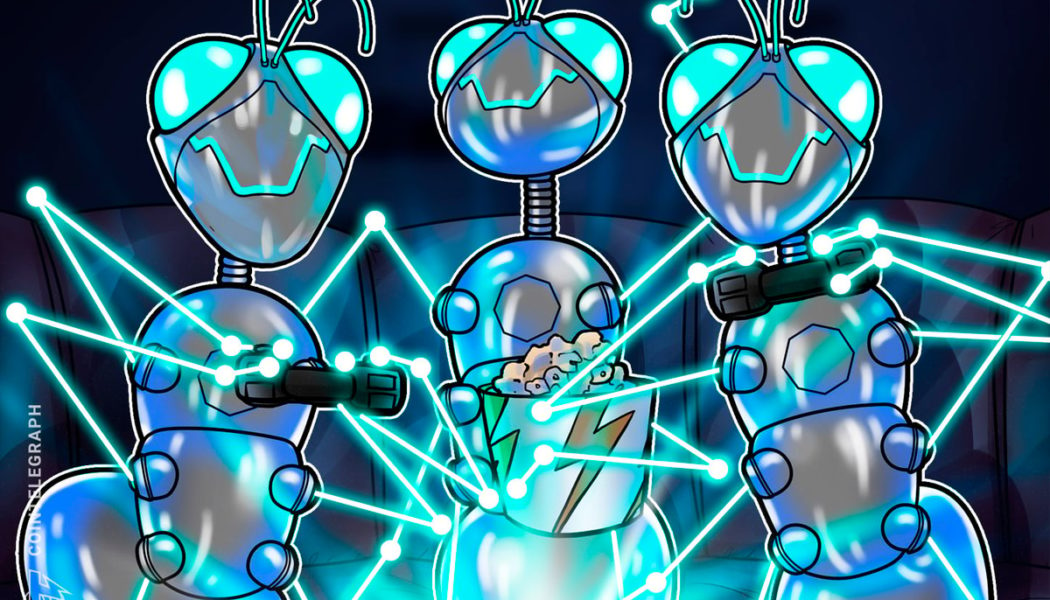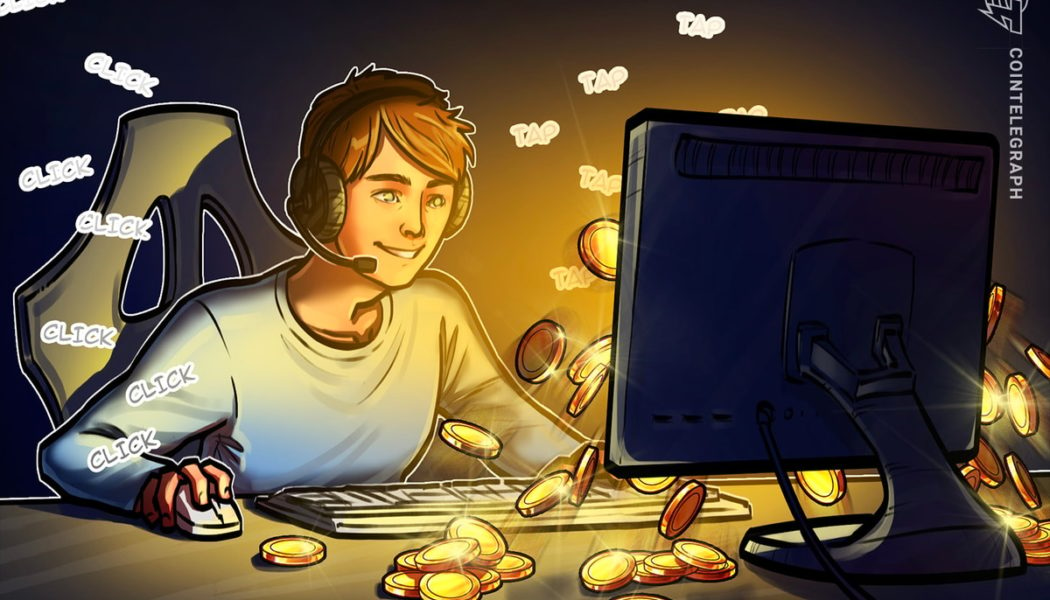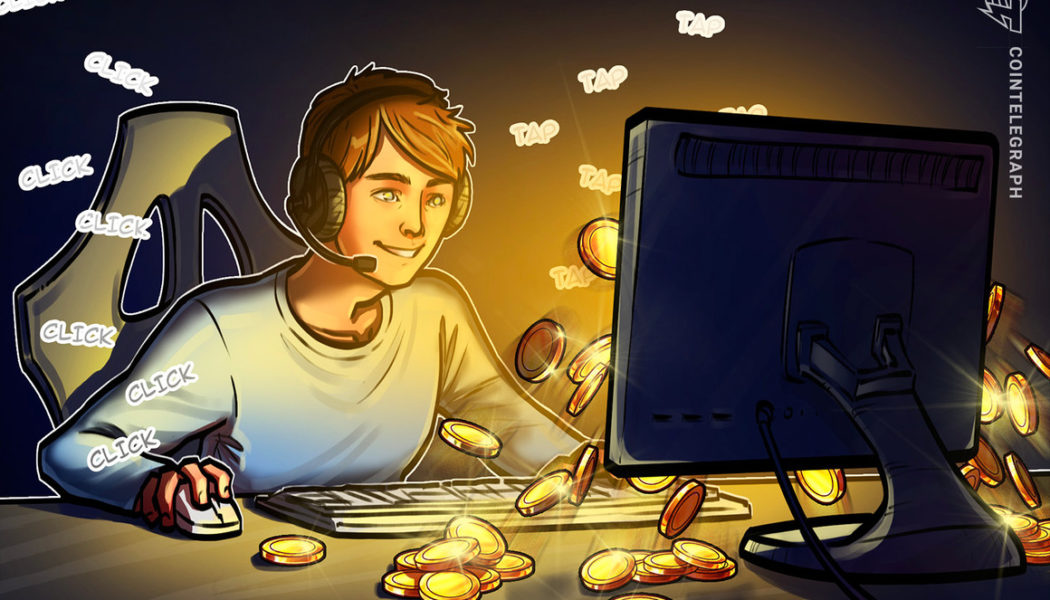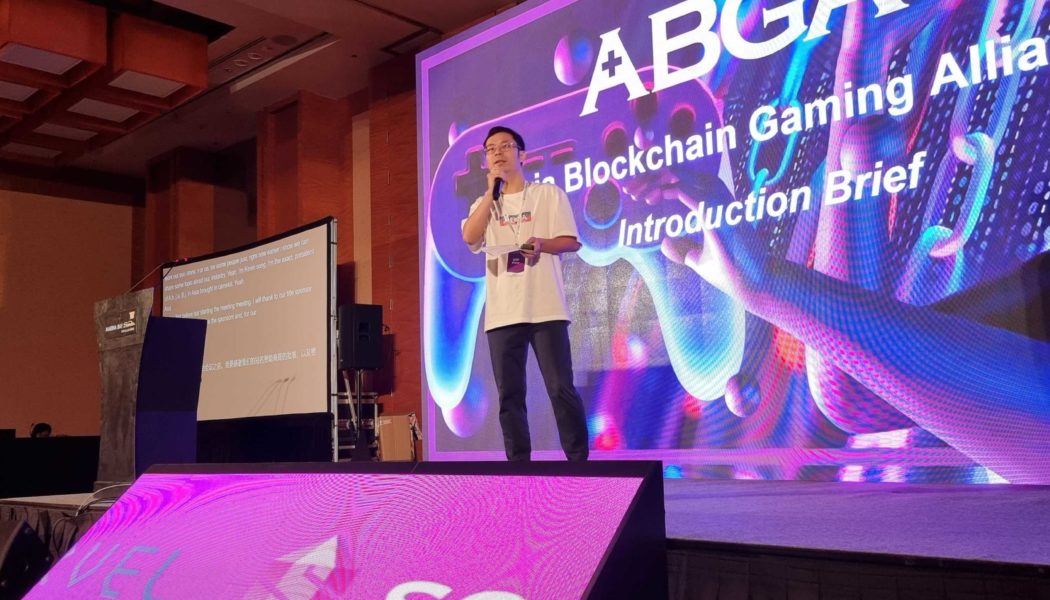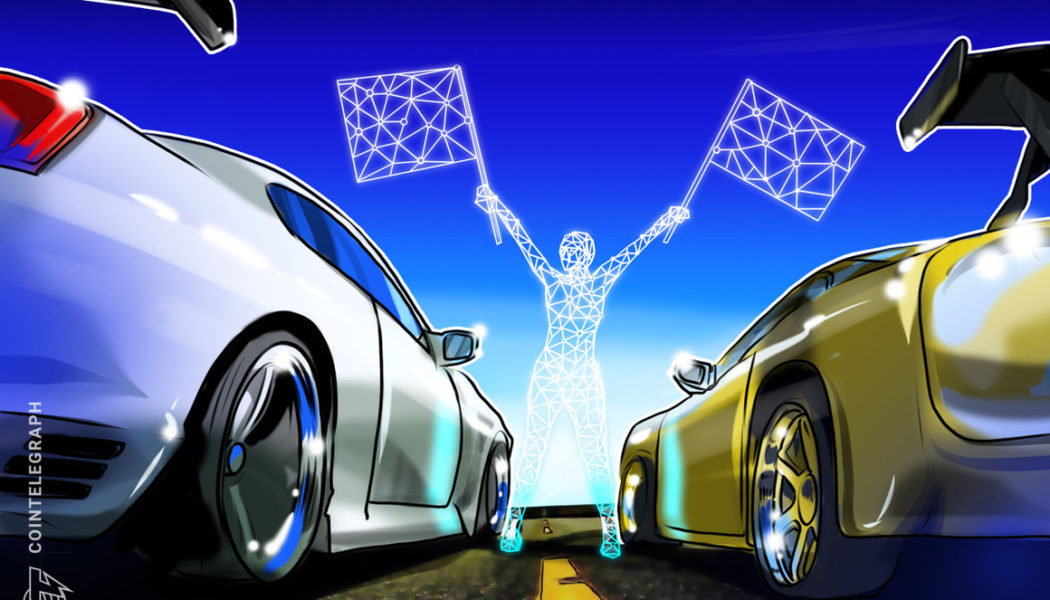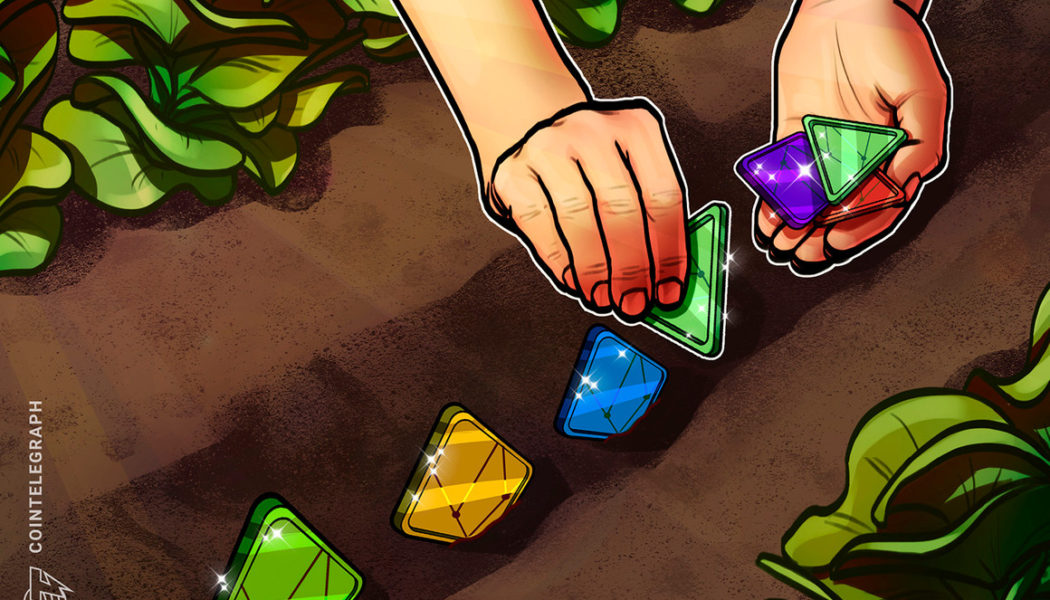GameFi
Final Fantasy creator reveals ‘aggressive investment’ in blockchain games
Final Fantasy creator Square Enix is set to double down on blockchain game development despite turbulence in the crypto market, according to a Jan. 1 letter from the Japanese company’s president, Yosuke Matsuda. The letter, titled “A New Year’s Letter from the President,” aimed to recap the company’s major accomplishments in 2022 and explain its plans for 2023. Out of 15 paragraphs, seven were about blockchain gaming, showing that blockchain gaming is a major focus of the company’s investing strategy going forward. ⚔An introduction to SYMBIOGENESIS ①⚔ Starting from today we’ll begin introducing Symbiogenesis, starting from the concept✨ Symbiogenesis is a new franchise by SQUARE ENIX, which brings real game utility ⚔ to 10000 collectible NFT artworks ...
Web3 community shares tips for a successful GameFi project
As the GameFi space continues its journey to attract gamers to a new gaming paradigm, community members shared their takes on what they think a mature GameFi project needs to succeed. From creating e-sports competitions with huge prize pools to making the game tokens more relevant for the token holders, GameFi community members shared their takes on what the space needs. One Reddit user suggested that GameFi projects need to appeal to several target audiences. This includes whales who will provide funding, earners who are mostly kids and people from developing countries and those who play for fun that will leave good reviews for the game. Another community member pointed out the need to improve the reputation of the space. According to the Redditor, there are some that consider GameF...
Axie Infinity is toxic for crypto gaming
Blockchain gaming is only four years old — a toddler compared to the rest of the industry. It has a lot of growing up to do, particularly when it comes to play-to-earn games. I’m a 28-year game industry veteran. I’ve produced 32 titles in that period of time on everything from Sega Genesis to Oculus Rift. Some of them were great. Many were forgettable. I didn’t hear much chatter about blockchain gaming from traditional developers and players until Axie Infinity began to take off. Cut to the peak of 2021, and the game had nearly 2 million players logging on daily. Most people outside the crypto community at the time were (and still are) extremely skeptical about blockchain’s ability to add anything meaningful to games. They see Axie as an example of the low production values and...
Axie Infinity is toxic for crypto gaming
Blockchain gaming is only four years old — a toddler compared to the rest of the industry. It has a lot of growing up to do, particularly when it comes to play-to-earn games. I’m a 28-year game industry veteran. I’ve produced 32 titles in that period of time on everything from Sega Genesis to Oculus Rift. Some of them were great. Many were forgettable. I didn’t hear much chatter about blockchain gaming from traditional developers and players until Axie Infinity began to take off. Cut to the peak of 2021, and the game had nearly 2 million players logging on daily. Most people outside the crypto community at the time were (and still are) extremely skeptical about blockchain’s ability to add anything meaningful to games. They see Axie as an example of the low production values and...
Web3 infrastructure firm ChainSafe raises $18.75M as attention shifts to GameFi
Canadian Web3 infrastructure company ChainSafe has closed an $18.75 million funding round that was backed by prominent industry venture firms, putting the company on track to expand operations at a time when demand for blockchain infrastructure and gaming services was on the rise. The Series A round was led by venture firm Round13 with additional participation from NGC Ventures, HashKey Capital, Sfermion, Jsquare, ConsenSys, Digital Finance Group and Fenbushi Capital. ChainSafe said the funding would go toward supporting the growth and adoption of Web3 technology. ChainSafe’s founding team met at an Ethereum meetup in Toronto in 2017. Later that year, ChainSafe was founded as a blockchain research and development firm. The company mainly focuses on multi-chain R&D and other Web3 umbrel...
3 ‘blockbuster’ titles that could save GameFi — ABGA President
Kevin Shao, Executive President of the Asia Blockchain Gaming Alliance (ABGA) says he’s holding out hope for three “triple-A” blockchain gaming titles that could help propel GameFi into the mainstream and rescue it from the bear market. Speaking to Cointelegraph during Asia Crypto Week, the Executive President said one obstacle preventing mainstream adoption is current GameFi titles often have a focus on non-fungible tokens (NFTs) and play-to-earn (P2E) features without caring about “game performance,” and users’ enjoyment. In a P2E model, gamers typically buy an NFT in order to play the game and can win gaming tokens which can then beconverted into Bitcoin (BTC), Ethereum (ETH), fiat currency, or stablecoins. While he acknowledges these current GameFi titles are enjoyable for a...
NFTs bring in-game ownership to a new level, says Blokhaus founder
Nonfungible tokens (NFTs) have taken the gaming world by storm. Whether it’s through limited edition collectibles, avatar enhancement or play-to-earn incentivization, digital assets have given in-game ownership a new meaning. The ways in which NFTs are available to players are becoming increasingly tangible. In the case of Blockxer, the latest blockchain game from Blokhaus Inc., every component of the game has been NFT-ized and available for modification by users. Mark Soares, the founder of Blokhaus Inc., told Cointelegraph that when every aspect of the game is an NFT, users can create completely “bespoke” game experiences. Everywhere a user turns in this 8-bit, arcade-inspired game, there is an NFT — from the background and the characters to the weapons and more: “Imagine the ...
Crypto gaming sucks — But devs can fix it
What we have today in terms of Web3 gaming is not working. Play-to-earn has not worked and neither will play-to-earn or any X-to/and-earn. On top of that, traditional gamers view nonfungible tokens (NFTs) with suspicion. They dunk on expensive apes and are skeptical of large game publishers applying the lipstick of NFTs for further monetization. Nobody knows what a successful Web3 game will look like yet. To get there, we need more developers to experiment with more models. We need infrastructure that will lower the barriers to Web3 game development and make it easy for developers to experiment. That’s why it’s imperative to invest in developing the underlying infrastructure rather than getting carried away by the speculative hype. The Web3 gaming infrastructure can be broken into two phas...
GameFi developers could be facing big fines and hard time
Are cryptocurrency games innocent fun? Or are they Ponzi schemes facing an imminent crackdown by regulators in the United States? Tokens related to cryptocurrency games — known colloquially as “GameFi” — were worth a cumulative total of nearly $10 billion as of mid-August, give or take a few billion. (The number may vary depending on whether you want to include partially finished projects, how you count the number of tokens that projects technically have in circulation, and so on.) In that sense, whether the games are legal is a $10 billion question that few investors have considered. And that’s an oversight they may soon regret. That’s because a bipartisan consensus appears to be forming among legislators in the U.S. that the industry needs to be shut down. They haven’t addressed the issu...
Fortnite developer supports Animoca subsidiary’s blockchain racing game
Australian indie game developer Grease Monkey Games, a subsidiary of Animoca Brands, has received received financial support from video-game giant Epic Games to develop a new blockchain-based motorsport game Torque Drift 2 Receiving an Epic MegaGrant from the Fortnite developers, the funding will be used to develop the motorsport title, which is based on drifting. The Unreal Engine is a 3D computer graphics game engine developed by Epic Games, which has been used in many industries after it was first showcased in the 1998 game Unreal. According to an Aug. 18 announcement from Animoca Brands, the Epic MegaGrant, which ranges from $5,000 to as much as $500,000, will be used to develop a realistic gaming experience that is on par with other triple-A games that also utilize the Unr...
NFT games have edge over ‘money in, no money out’ games: Polygon’s Urvit Goel
Polygon’s VP of Global Business Development for gaming Urvit Goel believes games that integrate nonfungible tokens (NFTs) have a natural edge on traditional games that don’t allow users to sell their in-game items. Goel spoke candidly with Cointelegraph in Seoul last week about Polygon’s (MATIC) push toward helping NFT games proliferate and why game publishers in South Korea like Neowiz and Nexon are diving headfirst into the space. One of the main arguments Goel made is that the traditional business model that NFT games are competing against may be inherently weaker. In traditional gaming, users typically buy in-game items with real money, but they cannot sell those items to get back any dollar value. However, with most games in the gaming finance (GameFi) space, users can buy items as no...
- 1
- 2
